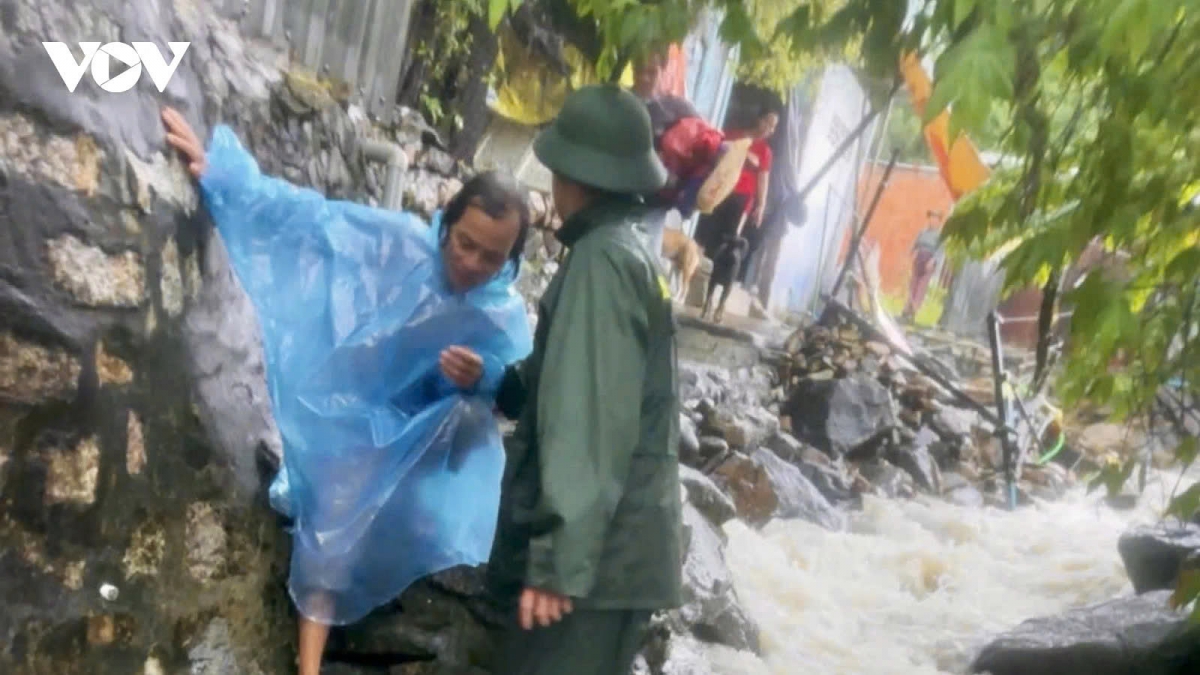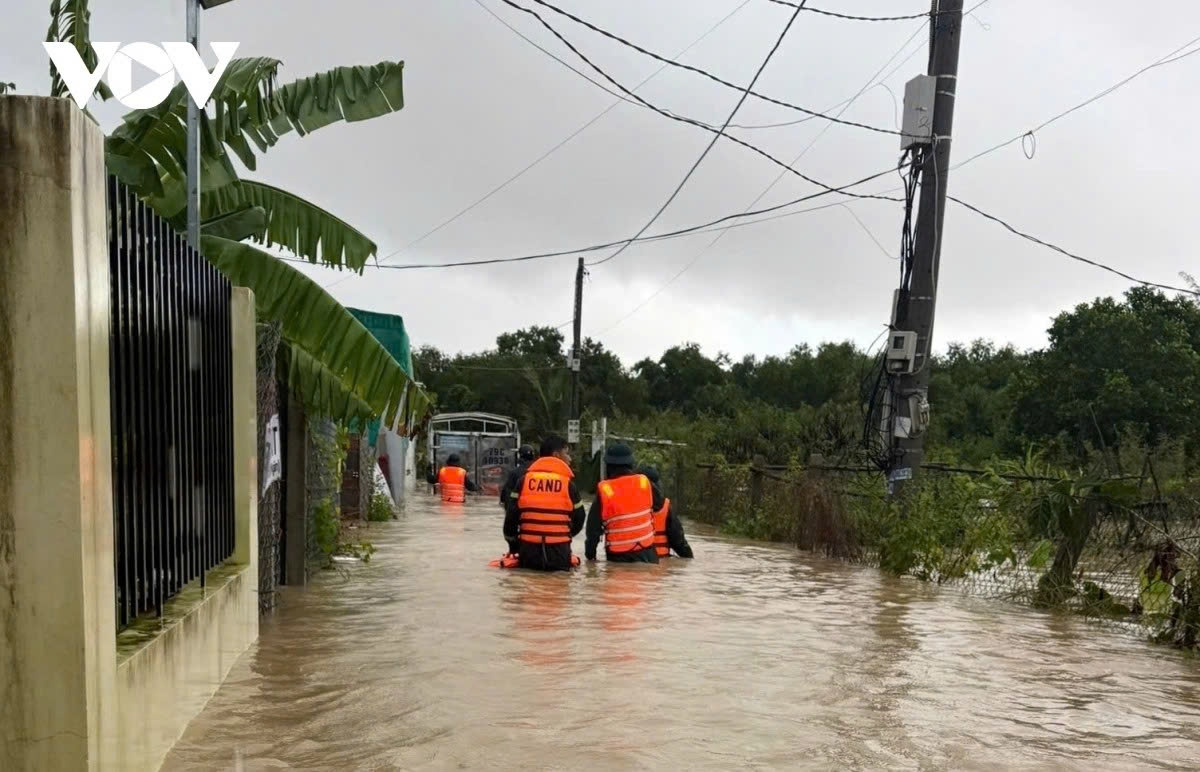Historic flooding: Thousands evacuated overnight as rivers surge beyond record levels
VOV.VN - Continuous torrential rain from the night of November 18 to the early hours of November 19 triggered one of the most severe flooding events across central Vietnam in recent years.

Vast areas were submerged, thousands of households fled in the middle of the night, and emergency forces worked without rest to rescue those trapped in fast-rising waters.
In the eastern part of Gia Lai province, floodwaters surged rapidly as the Ha Thanh and Kon rivers overflowed. Entire wards including Quy Nhon, Quy Nhon Bac, Quy Nhon Dong and Quy Nhon Tay, along with surrounding communes, were submerged and several locations were completely isolated.
Water levels rose so quickly that many residents had no time to react, with some neighborhoods submerged to depths of more than 2m, higher than the notorious 2009 flood.
Authorities in Quy Nhon North reported that around 10,000 households were inundated, forcing the evacuation of more than 3,000 families. Landslides struck Quy Nhon Nam ward, where all 42 households in high-risk zones were relocated during the night.
Faced with the escalating situation, military and police units deployed all available forces and equipment, including armoured vehicles, canoes and specialised trucks, to reach isolated communities. The Gia Lai Provincial Police mobilised 11 rapid-response units with over 500 officers, who worked through the night to move residents to safety and salvage essential property.
In one operation, the officers crossed fierce currents for nearly an hour to save a family trapped on the upper floor of their home as water rose to the level of the attic.

Severe flooding also struck eastern Dak Lak Province, where heavy rainfall caused rivers and streams to rise dramatically. Dozens of homes in Tuy An Tay commune were inundated, leaving many residents stranded on rooftops. Rescue teams worked overnight but were unable to reach several areas because of dangerously swift currents.
Rainfall exceeded extreme thresholds, with some stations recording over 400 mm in just ten hours. Major highways, including National Highways 25, 29 and 1, were completely shut down as floodwaters cut off all traffic.
Meanwhile, water levels on the Serepok, Ba, Ky Lo and Ban Thach rivers continued to climb, with several stations surpassing alarm level 3 and moving toward historic peaks.
Further south, floodwaters rose again in Khanh Hoa province after a brief pause the previous day. By dawn on November 19, entire neighborhoods were submerged, prompting local authorities to activate emergency protocols.
Military, police and civil defence forces were fully mobilised as loudspeakers and mobile response teams warned residents to move belongings to higher ground and prepare for evacuation. Several residential areas in Cam Ranh and Nha Trang were cut off, and dozens of households in Dien Khanh commune were relocated.
Emergency teams also managed to save a child choking on a foreign object in a flooded neighborhood and rescued three farm workers stranded by rising waters.
As of the morning of November 19, the disaster had caused 10 deaths, two missing persons and an estimated VND286 billion in damage in Khanh Hoa.

In Da Nang City, intense rainfall and upstream flooding caused significant erosion along the An Luong embankment in Duy Nghia commune, threatening more than 500 households.
Within an hour of receiving the alert, over 500 soldiers from the City Military Command and Division 315 were deployed to the site to reinforce the embankment in dangerous conditions. Despite earlier efforts to stabilise the area, new collapses continued to appear as floodwaters surged, forcing the forces to work continuously through the night.
Meteorological agencies warn that from November 19 to 22, central and south-central Vietnam will continue to face widespread heavy rainfall, with high risks of flashfloods, landslides and severe inundation in downstream regions. This weather system has produced abnormally fast-rising water levels, surpassing many previous flood records, isolating entire communities and causing extensive damage across multiple provinces.
Local authorities and emergency forces remain on full alert, prioritising the protection of human life as the situation continues to evolve unpredictably.





